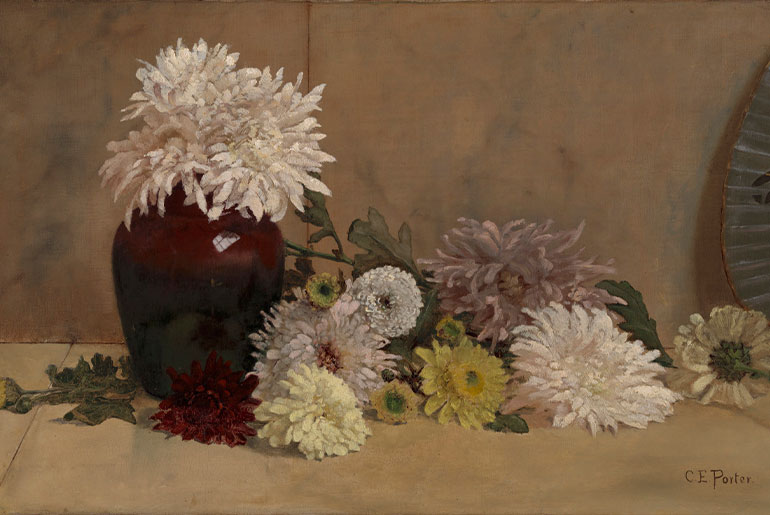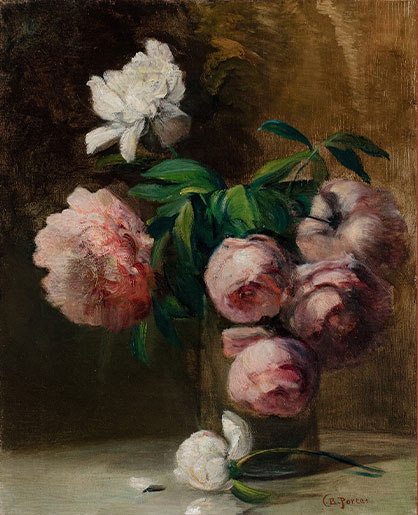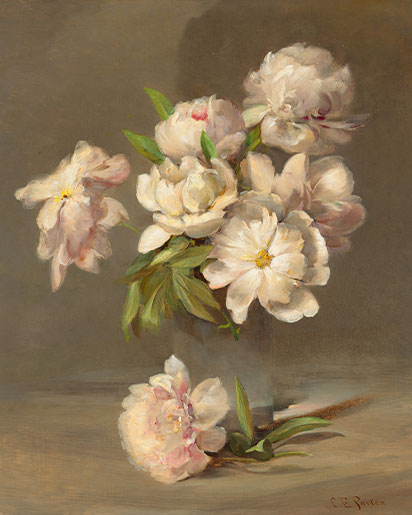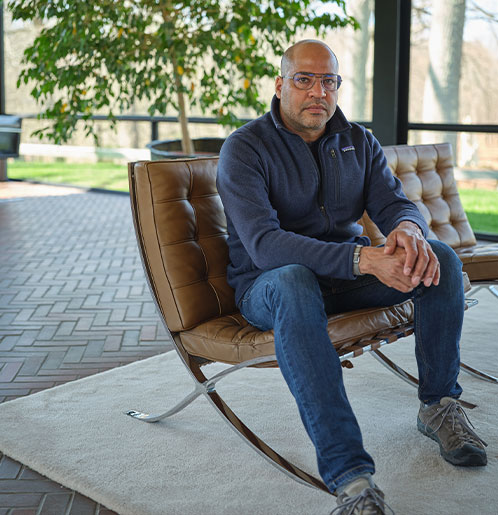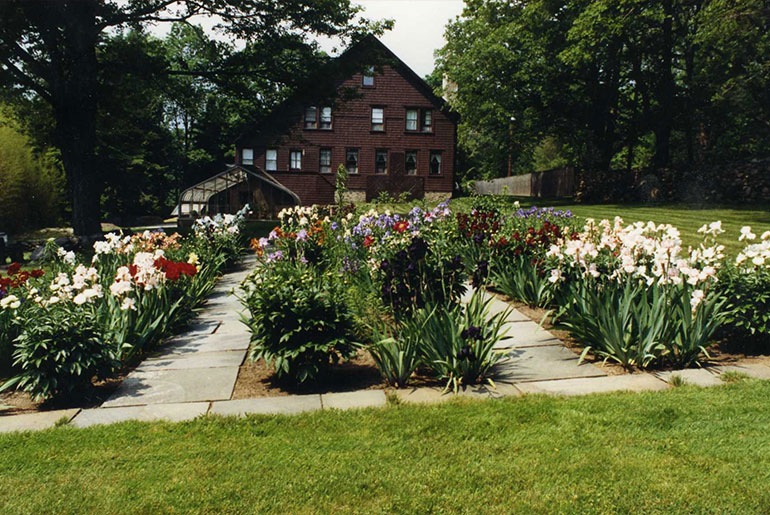The relationship between the garden and art has always been an intimate, reciprocal one. Samuel Untermyer based what is now the Untermyer Gardens Conservancy in Yonkers on Impressionist and Postimpressionist paintings of gardens (Page 38). But that relationship has taken on new layers of intensity at The Glass House in New Canaan where “David Hartt: A Colored Garden” is on view through Nov. 15.
Hartt, the Carrafiell assistant professor of fine arts at the University of Pennsylvania’s Stuart Weitzman School of Design in Philadelphia, creates environments that he also comments on in photography, film and video. That commentary may embrace everything from art history to architecture, landscape design, social justice and his own Black identity. Born in Montreal, Hartt developed an interest in the arts early, assisting his mother, a talented amateur photographer, in the makeshift dark room she set up in the basement of their home.
“I was a history major,” he says, “but a poor student as a history major. So I dropped out of school then reapplied.” (He holds a Bachelor of Fine Arts from the University of Ottawa and a Master of Fine Arts from the School of the Art Institute of Chicago.)
Hartt is being modest. He may not have become an historian but his works brim with the insight that history is not the past but the story of the past, ever alive in the present to guide, inspire, enlighten, entertain and caution us into the future.
“David’s poetic approach to the built environment reframes familiar ideas about site, history and identity,” says Cole Aker, curator and special projects manager at The Glass House, who first worked with Hartt on the 2019 installation “The Histories (Le Mancenillier),” which transformed the Frank Lloyd Wright-designed Beth Sholom Congregation in Elkins Park, Pennsylvania, into a tropical Martin Johnson Heade painting, complete with references to classical historian Herodotus, Creole-Jewish composer Louis Moreau Gottschalk and Canadian experimental filmmaker Michael Snow. “(David’s) deep sensitivity to the specificity of place is evident throughout his work and foregrounds the personal, idiosyncratic and often unexpected ways in which communities engage the spaces they inhabit. His project at The Glass House explores histories lying dormant in the landscape — a playful, exuberant and vibrant counterpoint to the surrounding grounds.”
Hartt’s circular garden in the 49-acre Glass House’s southern meadow, 40 feet in diameter, echoes circular elements of controversial architect Philip Johnson’s historic Modernist estate and of the gardens, many of which are no longer extant, created by David Whitney, a curator who was Johnson’s partner for more than 40 years. But it also conjures the pregnant blossoms in the richly textured still lifes of Charles Ethan Porter (1847-1923), the Rockville, Connecticut, painter who was one of the first African American artists to exhibit at the National Academy of Design in Manhattan, where he studied. The title “A Colored Garden” — a double entrendre that for Americans of a certain vintage will summon up the Jim Crow era of segregation for whites and “coloreds” — is “a bit of a provocation,” Hartt says with characteristic understatement. “But Porter said, ‘I am a colored artist. These are my people.’”
And yet, in his day Porter created transcendent works that were admired by everyone from Hudson River School painter Frederic E. Church to writer Mark Twain, one of his patrons. Little wonder. You can almost scent the blooms in a Porter painting. Indeed, you will be forgiven for wishing you could disappear into the canvases and snatch them for your very own.
“Porter was recognized in his time but lost to history,” Hartt says. Race undoubtedly played a role in that. But so did Porter’s genre, the still life, which throughout art history has been viewed as less important than history painting (religious and mythological action works), portraiture and landscape painting. In any event, Porter’s painting was ripe for the plucking by a history-savvy artist. At The Glass House, Hartt’s “Colored Garden” will include peonies, phlox, chrysanthemums and zinnias that will overlap in their sequential blossoming, giving the garden breadth and depth. A bronze mask designed by Hartt will hold cuttings from the garden atop The Glass House’s dining room table.
But this is just the beginning. As part of a year-long residency, Hartt is making a film that follows a group of Black female musicians on the grounds performing new chamber music by Tomeka Reid. Noting that visitors to The Glass House in Johnson’s day constituted a particular “Who’s Who” of the arts, Hartt says he wondered: “What if a different group visited now?”
The musicians constitute that group as well as the attendants in the painting “The Burial of Phocian” (1648, oil on canvas), attributed to the French landscape painter Nicolas Poussin, which graces The Glass House and mirrors its pastoral marriage of architecture and landscape. But scholars and critics have argued that the painting — about the rise, fall and reevaluation of an Athenian statesman who was perceived to have sold out his city-state to appease its overlord, Macedon — is also a metaphor for Johnson, whose work has become divisive in light of his earlier Nazi views. In 1956, he donated the design for Congregation Kneses Tifereth Israel in Port Chester, which some accepted as a desire for atonement. “I have no excuse (for) such unbelievable stupidity,” he said in once again repudiating his white nationalist, anti-Semitic views during a 1993 Vanity Fair interview. “I don’t know how you expiate guilt.”
Some say that you can’t, particularly in the aftermath of George Floyd and the renaissance of the social justice movement. In December of last year, the Johnson Study Group — consisting of 40 architects, designers and educators — penned an open letter to The Museum of Modern Art in Manhattan, where Johnson was the first chairman of the department of architecture and design, demanding his name be stricken “from every leadership title, public space and honorific of any form.” The former Philip Johnson Thesis House at Harvard University is now known only by its address.
Perhaps some views are a bridge too far. But the celebration of Black artists and musicians at The Glass House offers a fitting, ironic counterpoint to Johnson’s past as well as to cancel culture.
As Hartt noted in a recent interview with Pin-Up, the biannual architectural entertainment magazine, “While I appreciate and applaud (the Johnson Study Group’s) efforts in terms of trying to address the histories of racism and Fascism that are entangled within Philip Johnson’s legacy, that doesn’t prevent me from also thinking about The Glass House as a site that can be productive. I’m not, however, interested in creating a piece that is about Philip Johnson, just as I wasn’t interested in creating a piece about Frank Lloyd Wright….To me they’re all proxies that allow me to discuss the authoritarian aspects of Modernism or issues of colonialism and so on.”
Hartt is calling his film “Et in Arcadia Ego,” the name of two other paintings by Poussin. Translated from the Latin, the ambiguous phrase means “I, too, am in Arcadia,” referring to death — the “I” in the phrase and in the paintings — being part of Arcadia, a rural Eden in central Greece.
But there’s another way to view it: We imperfect, fragile creatures have an opportunity to create a bit of paradise on earth.
The Glass House website offers this note to visitors: “The best time to view the garden will be approximately mid-May to mid-October. However, these dates may change if the bloom is either early or late due to weather conditions.” For more, visit theglasshouse.org.

